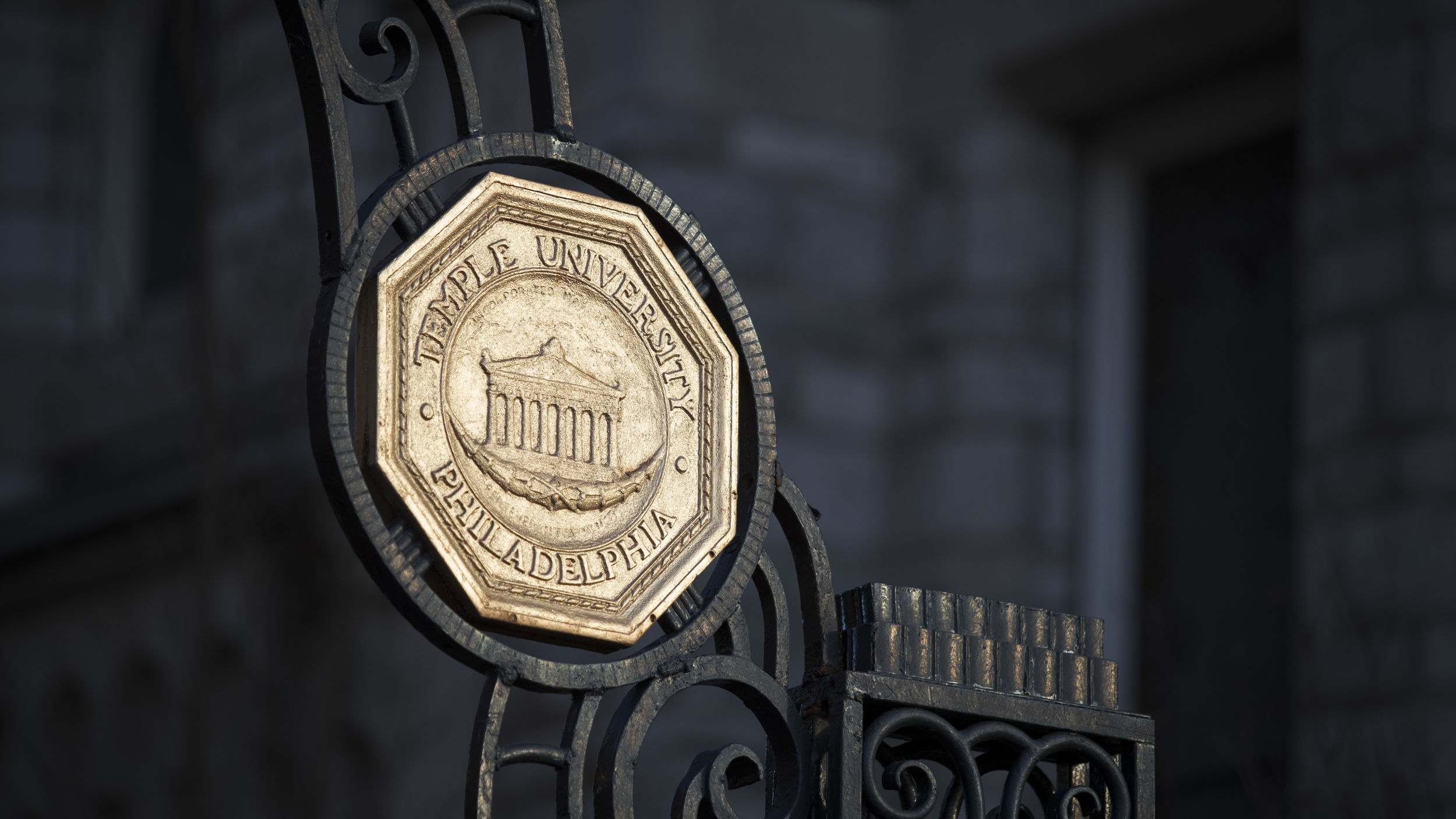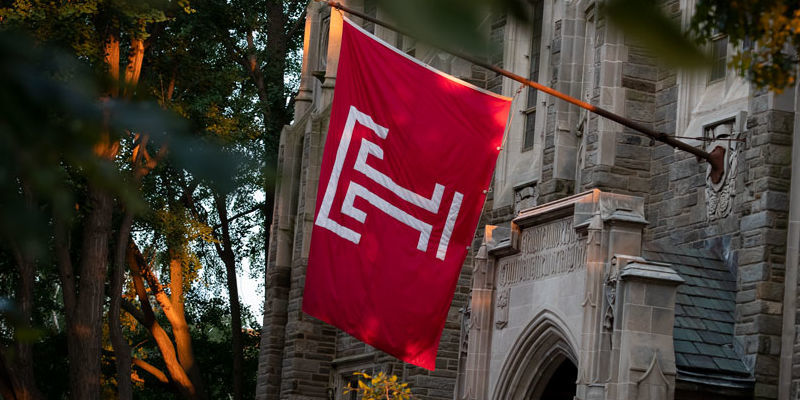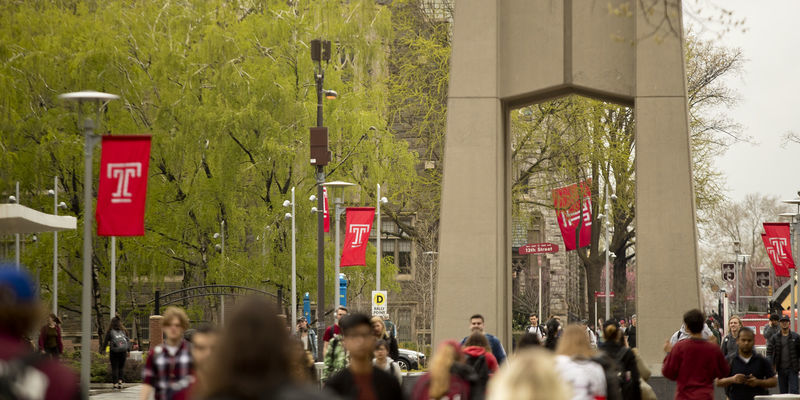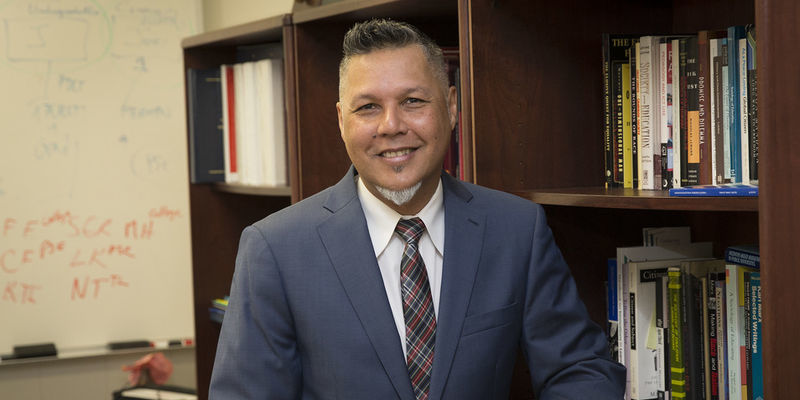Highlights from recent stories featuring Temple in the media
Faculty experts weigh in on the educational, medical, psychological and socio-economic impacts of the coronavirus outbreak.

As the worldwide spread of COVID-19 continues to be felt in almost every aspect of daily life, Temple faculty are sought by reporters to share their expertise, whether that means identifying how the tourism industry can recover, suggesting ways that parents can support their children’s learning during quarantine, outlining the effects of the epidemic on low-income college students or describing the financial repercussions for hospitals. Here’s what they have to say.
How contact tracing works
To track coronavirus cases, states are ramping up contact tracing. Usually through phone conversations and obtaining records, the tracers can build a list of anyone who crossed paths with an infected person and may be at risk for a disease, according to Krys Johnson, an assistant professor of epidemiology and biostatistics. The role helps trace the spread of the disease, but is most effective when the number of cases is low, she added.
NBC10 | May 13, 2020
When to book your next trip
Travel operators around the country are wondering when people will begin to feel comfortable planning their next vacation. “Leisure travelers will be back,” said Michael Sheridan, an assistant professor of tourism and hospitality management. “But they will be more cautious,” he predicted. “People will choose road trips over flights. They'll book a chain hotel with their brand standards of cleanliness and hygienic conditions, instead of an Airbnb.”
USA Today | May 8, 2020
Why we’re exercising more
Since the onset of the pandemic, mental health professionals have watched as individuals use exercise to cope with and manage their anxiety. “We often associate anxiety with detrimental symptoms such as restlessness, muscle tension and irritability,” said Edward Darrah, a mental health and performance counselor for Temple Athletics. “But it’s also linked to several positive attributes, such as enhanced energy and motivation.” And according to Lois A. Butcher-Poffley, assistant professor of kinesiology, it can also provide a sense of freedom: “Fresh air, different scenery and feeling the earth under your feet can make you feel renewed.”
Philadelphia magazine | May 7, 2020
Low-income college students pay a steep price
As universities around the country shut down campuses and dormitories under coronavirus-related stay-at-home orders, low-income and homeless students are facing increasing challenges. “What I really wish people knew is that students who are so-called housing insecure people, who have trouble paying their rent, people who have trouble paying their utility bills, people who might just be late on a payment or are living in overcrowded conditions that are not safe—these people often look like me,” said Sara Goldrick-Rab, professor of higher education policy and sociology. “The truth is, this can happen to anybody.”
ABC News | May 6, 2020
How parents can support learning during quarantine
Kathy Hirsh-Pasek, professor of psychology and director of Temple’s Infant Language Lab, advised parents not to worry too much if their kids don’t seem to be getting as much out of remote instruction as they did in school. Corporations tell us they’re looking for a suite of skills that we are all practicing at home right now, including collaboration, communication and critical thinking, she explained. “Not all learning is the kind of learning you get in a textbook or the kind of learning you can test on a test.”
ABC News| May 4, 2020
An invisible enemy
Why are some Americans resisting social distancing guidelines? According to Professor of Psychology Thomas Shipley, folks may be underestimating the coronavirus because in their minds infectious disease is not the threat it once was and it’s hard to assess the impact of an enemy you can’t see. “Part of the reason why people found the onset of the pandemic disconcerting was that they may not have had a mental model of why things were accelerating,” he said.
Philadelphia Inquirer | May 4, 2020
Moving at breakneck pace
At Temple University Hospital, researchers are currently running seven clinical trials to test the efficacy of investigational therapies for COVID-19. Gerard Criner, professor and chair of thoracic medicine and surgery at the Lewis Katz School of Medicine and director of the Temple Lung Center, is the lead investigator for four of those trials. In his 50 years at Temple, he said he’s never seen this many trials launch simultaneously in such a short period of time. “It’s uncommon to run this many new trials all at once, but that’s what happens in a pandemic,” he said.
Philadelphia magazine | May 4, 2020
Motivation to stay home may be wearing thin
Americans are on the move again, indicating that as the pandemic drags on, adherence to shelter-in-place guidelines may be wearing off. Folks may be suffering from “behavioral fatigue,” in which they lose motivation to maintain new habits, said Vinod Venkatraman, associate professor of marketing and director of Temple University’s Center for Applied Research in Decision Making. And the trend could snowball, he explained. “You don’t want to be the first one to do it because in some ways, you’re worried about what others are going to think,” he added. “But when other people are doing it, you just feel like, ‘OK, I’m still doing my best by social distancing or whatever, but I want to do something different.’”
Philadelphia Inquirer | May 2, 2020
Will the tourism industry recover?
The coronavirus pandemic cut off non-essential travel and one of the casualties of that was the tourism industry. Business for hotels, airlines and tourist attractions has all but disappeared. So how long will the impact last, and is there a way to return to normal? Yang Yang, an associate professor in the School of Sport, Tourism and Hospitality Management joined KYW In Depth to talk about the future of tourism in Philadelphia and around the globe.
KYW Newsradio | May 1, 2020
Keeping hospitals open costs a bundle
With an influx of COVID-19 patients to care for, emergency departments and intensive care units are busier than ever. But administrators say the facilities are strapped for cash because health insurance reimbursements are low. “They’re using a lot of staff, they’re using a lot of equipment, but they’re not collecting any revenue to offset those expenses,” said Carla Jackie Sampson, assistant professor and director of the healthcare management program in the Department of Risk, Insurance and Healthcare Management at the Fox School of Business.
KYW Newsradio | April 30, 2020
Blood clots turning up in COVID-19 patients
Doctors are noticing a new trend in COVID-19 patients in the form of blood clots. In a piece that was rebroadcast at stations around the country, NBC10 spoke with Gerard Criner, professor and chair of thoracic medicine and surgery at the Lewis Katz School of Medicine and director of the Temple Lung Center, about what he’s seeing: “This viral infection is so intense that it not only inflames certain parts of an organ like the lung tissue, but also the lung blood vessels and blood vessels throughout the body, and even arterial clots can occur, which is rare to see with infections overall.”
NBC10 | April 28, 2020
What the future holds
As states begin to talk about reopening after COVID-19 closures, 6ABC’s Inside Story interviewed Assistant Professor of Epidemiology and Biostatistics Krys Johnson on what we should anticipate in the future in terms of daily life. “We’ll see reduced capacity and continued social distancing,” said Johnson, “Contact tracing is also going to be important to allow for us to see that semblance of normalcy we are looking for.”
6ABC | April 27, 2020
Contract workers left out in the cold
Even before the pandemic, labor experts and organizers called the American economy’s move toward subcontracting a “race to the bottom,” in which workers get paid less while facing more dangerous working conditions. One question that’s come up: Who should inform workers about coronavirus risks on the job? “Although both the temp agency and the host employer are responsible for ensuring worker safety under the law, it’s often unclear who’s training workers,” said Temple Law Professor Jennifer Lee, who runs the Sheller Center for Social Justice. “There’s not the same sense of responsibility or obligation to temp workers as there is to permanent employees.”
Philadelphia Inquirer | April 27, 2020
Why are coronavirus infection rates higher in Allentown than Philly?
As of April 24, Allentown’s known rate of infection remained more than four times greater than the known statewide rate, 10 times greater than Pittsburgh’s rate and twice that of Philadelphia. In Center City Allentown, where the population is dense, social distancing isn’t easy. Sarah Bass, associate professor in the College of Public Health and director of the Risk Communication Laboratory, wishes initial public service announcements had more forcefully emphasized the risk of young people spreading the virus. “Our main message at the beginning was, ‘If young people get this, they probably won’t get that sick, but they still need to practice social distancing because they might give it to grandma,’” Bass said. “The problem is, that last part is the last part. Mixed messages give people a reason to feel like maybe they don’t really need to worry about this.”
Allentown Morning Call | April 24, 2020
Will coronavirus change how we define heroes?
These days front-line healthcare professionals are being hailed as heroes, but what underpins heroism is little understood. Frank Farley, professor of educational psychology and an expert on extreme behaviours, argues heroic acts may be the product of a predilection for thrill seeking—the “T type” personality, as he calls it. “We don’t tend to think of people who work in hospitals as taking risk so much as mitigating it, but you do see these kinds of qualities in medical people. After all, if you were risk-averse you probably wouldn’t go into ICU work,” he said. “I’ve studied heroism for years now and still can’t claim to understand it. But it is an astounding quality, a beacon of light in the human condition.”
BBC | April 23, 2020
A new, possible sign of COVID-19
As the COVID-19 circulates, more symptoms are being identified. One new condition, possibly linked to the coronavirus, has captured the attention of researchers. Dubbed “COVID toes,” it can look like “purple lesions” on feet or hands. The research is ongoing and rooted in “observation,” Tracey Vlahovic, associate professor of podiatry, told TODAY. “There’s no one-to-one correlation.”
Today | April 17, 2020


